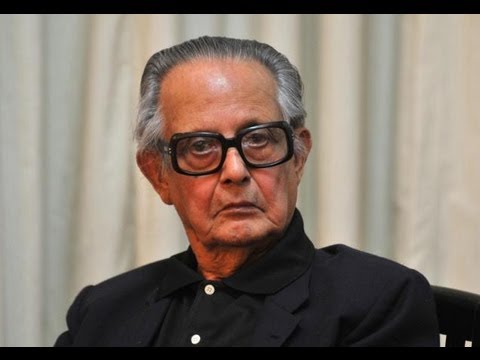
By Shudip Talukdar
R.K. Laxman, considered by many as one of the world’s greatest cartoonists, was an institution unto himself, indisputably the uncrowned conscience keeper of the nation. No politician or minister, however high or mighty, escaped his pointed satire, conveyed through a few deft strokes of his brush, especially if they committed an act of impropriety or indiscretion.
Laxman’s Common Man, who graced the front pages of The Times of India for more than five decades, under “You Said It” acquired an iconic stature of its own. These pocket cartoons not only conveyed the pulse of a nation, but also unfailingly delivered powerful messages. At the same time they mirrored the hopes and aspirations, follies and foibles of a society in transition.
The cartoons of Laxman, who died Monday, became the defining moments in nation’s history, as for instance, the one on Aryabhatta, India’s first satellite. A couple of middle-aged office-goers are waiting at a bus stop. One of them wants to know the time. As soon as the other looks at his watch and answers, the questioner looks skywards, exclaims: “Aryabhatta must have completed one orbit by now.”
His huge canvas spanned local, national and global personalities and issues, born out of his deep understanding of the cross currents shaping the world. His take on Angolan crisis in which both the super powers fought through proxies, at the height of the Cold War, shall remain among his many unforgettable cartoons.
The three-column illustration depicts Leonid Brezhnev and Jimmy Carter, presidents of erstwhile USSR and US, who are stealthily stepping across the coast of Angola, both armed and in the guise of burglars. Carter cries “thief-thief” as soon as he spots his burly opposite number. It exposes their double-speak and evokes laughter at the irony. These cartoons speak volumes about Laxman’s capacity to convey complex geopolitical realities in his characteristic style.
Laxman’s cartoons, undoubtedly the outcome of a brilliant mind, also entailed sheer hard work. It meant isolating himself for six hour daily, neither speaking nor listening to anyone during the period. “Searching for new ideas is an endless process. You have to come up with new and innovative idea each day,” he said.
Some of the tomes showcasing Laxman’s perspective also include the one which appeared just after the 1971 India-Pakistan war, in three columns, in his inimitable style. General Yayha Khan, pointing to the stack of destroyed Pakistani tanks and planes in the background, tells Zulfikar Ali Bhutto, with a smile: “Have I not made it seem like a thousand-year war,” (which only lasted 14 days). Bhutto often boasted about waging a millennial war against India.
Laxman, the youngest of six siblings, was born Oct 24, 1921, in Mysore. He showed promise very early in life. The illustrations in The Strand, Punch, Bystander and Tit-Bits, reputed British magazines, spurred his innate talent which found an outlet in his own house. He drew on its floor, walls and doors, sketched caricatures of his school teachers. Sir David Low, the world-famous cartoonist whose sketches also appeared in the Hindu, also influenced him.
Laxman lost his father, a headmaster, in childhood to the after-affects of a paralytic stroke, which he suffered a year earlier. The family elders stepped in and took responsibility for his children’s upbringing and schooling.
Refused admission to the J.J. School of Art in Mumbai, on the grounds that he lacked requisite talent, Laxman joined the Maharaja’s College in Mysore. While doing his graduation in arts, he began to illustrate the stories of elder sibling R.K. Narayan, which appeared in The Hindu. He contributed cartoons to Swatantra, a local daily. Later, he worked for Swarajya and Blitz. Laxman also drew cartoons for Koravanji, the Kannada humour magazine.
But his stint with the Free Press Journal, where he worked with Bal Thackeray, happened to be his first full-time job. In 1951 Laxman joined The Times of India, Mumbai, which he served for more than 50 years, until a stroke in September 2003 left him partially paralyzed.
While receiving the Lifetime Achievement Award in Bangalore in February 2002, Laxman observed. “The ‘Common Man’ has not changed in the last five decades, and will not change. If he does, then he will become a terrorist… He represents the silent majority of India, who have no voice.”
Ajit Ninan, who worked for India Today and Outlook as a cartoonist, in an interview with the ‘Star of Mysore’ in July 2012 rated Laxman the best in India, “because he was a typical South Indian genius. He was a big crowd-puller and by nature he was funny, sharp and witty”.
Laxman was married to Bharatanatyam exponent and actress Kumari Kamala Laxman, whom he divorced. Later, he married Kamala Laxman, who wrote children’s books. They moved to Pune where he breathed his last.